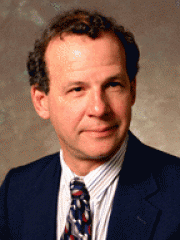Marc Davis received his B.S. in 1969 from the Massachusetts Institute of Technology and his Ph.D. in 1973 from Princeton. After a lectureship at Princeton he was an assistant/associate Professor of Astronomy at Harvard University from 1975, and moved to Berkeley in 1981. He is a fellow of the American Physical Society and the American Association for the Advancement of Science. He is a member of the National Academy of Sciences and the American Academy of Arts and Science. He has been a Sloan Foundation Fellow and a Miller Professor.
Research Interests
My research is focused on physical cosmology, especially on questions of the nature of large-scale structure in the Universe and its evolution. My students and I have undertaken large redshift surveys of galaxies, with the goal of measuring statistical properties of the galaxy distribution that are useful for the determination of cosmological parameters. With students and postdocs, I have worked on large-scale simulation studies of structure formation as tests of alternative cosmologies and various models of dark matter. Recent work has focused on detailed comparisons of the measured velocity field of galaxies with the gravity field inferred from the large-scale galaxy distribution. We have simulated the formation of galaxies with inclusion of gas dynamical effects and feedback from star formation. My most recent Future work involved extensive use of the 10 meter Keck telescope.
Current Projects
For the past several years, we have been observing a new spectroscopic survey of the distant Universe, the DEIMOS/DEEP redshift survey. This was a unique enterprise combining the power of the world's largest telescope with a new wide-field, medium resolution optical spectrograph, DEIMOS, which has been optimized for this project. We have now accumulated in a program of 100 Keck nights high quality spectra of 40,000 galaxies at redshift Z~1. We can use Keck as a time machine to study galaxies and their clustering properties as they were at half the present age of the Universe. Such studies are sensitive probes of cosmological models and will yield unprecedented information on the formation history of galaxies and AGN.
Our understanding of cosmology has made rapid progress, but fundamental unsolved mysteries remain. Recent evidence suggests that the expansion of the Universe is accelerating, which, according to Einstein's theory of General Relativity, can occur only if the Universe contains a substantial amount of "dark energy" with negative pressure, in addition to the ubiquitous "dark matter" needed to explain structure in the Universe and the masses of galaxies and clusters of galaxies. There are no laboratory experiments that can probe the "dark energy" sector; only by global cosmological investigations can this mysterious component be constrained. Yet such a component of the Universe must ultimately be explained by fundamental physics, and it is therefore important that independent investigations with different systematic errors be brought to bear on this question. By counting the abundance of galaxies as a function of their internal linewidth, or by counting clusters of galaxies as a function of their internal velocity dispersion, the DEIMOS/DEEP survey will set stringent constraints on the properties of the dark energy. Further details are provided on the web pages below.
There is an opportunity in my research group for new students to join in this major research program. Our team is small and there is ample opportunity for enterprising students to take charge of major components of the survey.
Publications
B. Moore and M. Davis, "The origin of the Magellanic stream," Mon. Not. of the R.A.S.270, 209 (1994).
A. Nusser and M. Davis, "Estimation of peculiar velocity from the inverse Tully-Fisher relation," Mon. Not. of the R.A.S.276, 1391 (1995).
M. Davis, A. Nusser, and J. Willick, “Comparison of velocity and gravity fields: The Mark III catalog versus the IRAS 1.2 Jy Survey,” Ap. J.473, 22 (1996).
D. Schlegel, D. Finkbeiner, and M. Davis, "Maps of dust IR emission for use in estimation of reddening and CMBR foregrounds,” Ap. J.500, 525 (1998).
J. Newman and M. Davis, “Measuring the cosmic equation of state with counts of galaxies,” astro-ph/9912366, Ap. J. Lett.543, 11 (2000).
M. Davis, J. Newman, S. Faber, and A. Phillips, “The DEEP2 redshift survey,” ESO conference on DEEP fields, astro-ph/0012189 (in press).

